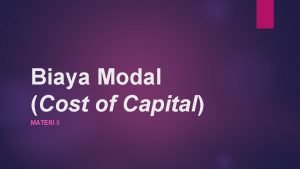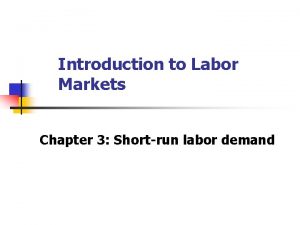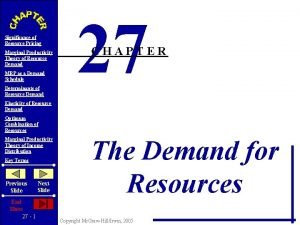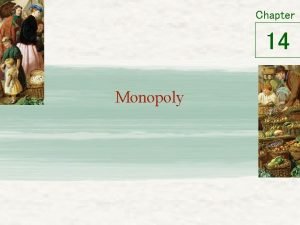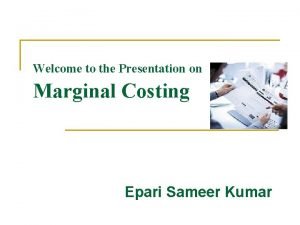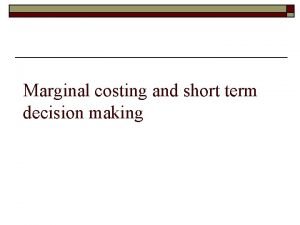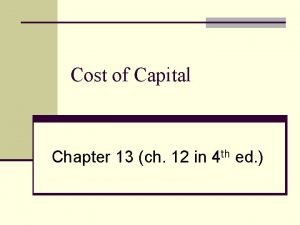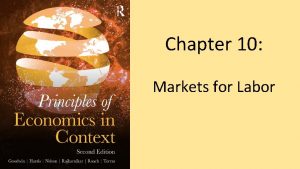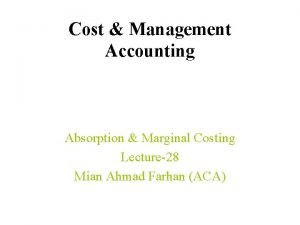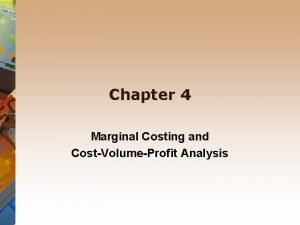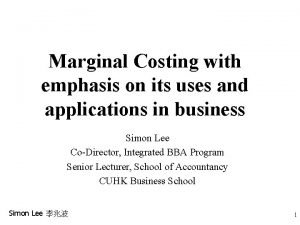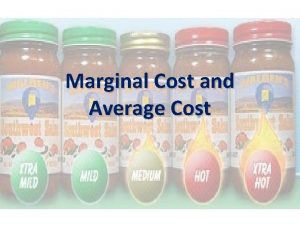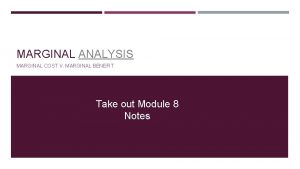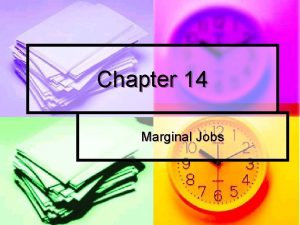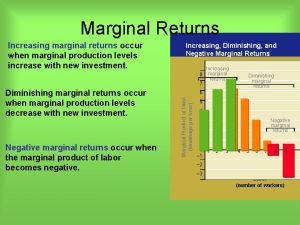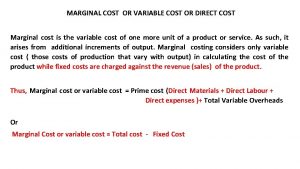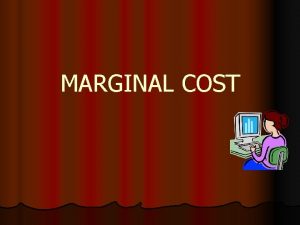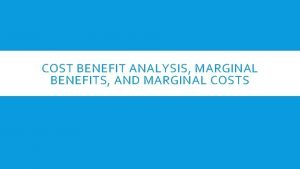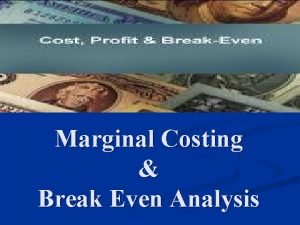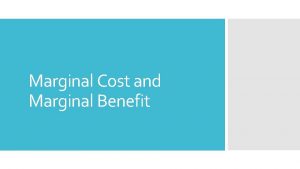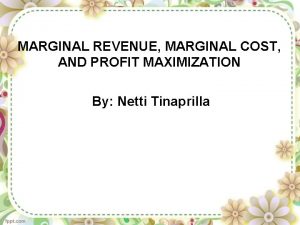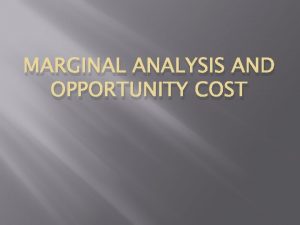PRICECOST Marginal Cost P 6 P 5 P














- Slides: 14


PRICE/COST Marginal Cost P 6 P 5 P 4 P 3 Average Total Cost P 2 P 1 Demand 0 Q 1 Q 2 Q 3 Q 4 Q 5 Q 6 Q 7 ATTENDANCE Marginal Revenue 1. There is one art museum on the island of Watsonia. The museum’s demand cost curves are shown in the graph above. The museum currently relies on an admission charge for some of its funding. Its directors are debating about how to set the admission charge.

PRICE/COST Marginal Cost P 6 P 5 P 4 P 3 Average Total Cost P 2 P 1 Demand 0 Q 1 Q 2 Q 3 Q 4 Q 5 Q 6 Q 7 ATTENDANCE Marginal Revenue a) Using the labeling of the graph above, identify the price and quantity associated with the following objectives. i) The museum maximizes its profit. P 5 Q 2

PRICE/COST Marginal Cost P 6 P 5 P 4 P 3 Average Total Cost P 2 P 1 Demand 0 Q 1 Q 2 Q 3 Q 4 Q 5 Q 6 Q 7 ATTENDANCE Marginal Revenue a) Using the labeling of the graph above, identify the price and quantity associated with the following objectives. ii) The museum maximizes its total revenue P 3 Q 4

PRICE/COST Marginal Cost P 6 P 5 P 4 P 3 Average Total Cost P 2 P 1 Demand 0 Q 1 Q 2 Q 3 Q 4 Q 5 Q 6 Q 7 ATTENDANCE Marginal Revenue a) Using the labeling of the graph above, identify the price and quantity associated with the following objectives. iii) The museum maximizes the sum of consumer and producer surplus. P 4 Q 3

PRICE/COST Marginal Cost P 6 P 5 P 4 P 3 Average Total Cost P 2 P 1 Demand 0 Q 1 Q 2 Q 3 Q 4 Q 5 Q 6 Q 7 ATTENDANCE Marginal Revenue a) Using the labeling of the graph above, identify the price and quantity associated with the following objectives. iv) The museum maximizes its attendance, as long as it breaks even. P 2 Q 5

PRICE/COST Elastic Marginal Cost P 6 P 5 P 4 P 3 Average Total Cost P 2 Inelastic P 1 Demand 0 Q 1 Q 2 Q 3 Q 4 Q 5 Q 6 Q 7 ATTENDANCE Marginal Revenue b) When the attendance is Q 1, is the demand price elastic, inelastic, or unit elastic? Explain. Demand is elastic at Q 1. MR is greater than zero; Q 1 is left of the mid-point or in the upper half of the demand.

PRICE/COST Marginal Cost P 6 P 5 P 4 P 3 Average Total Cost P 2 P 1 Demand 0 Q 1 Q 2 Q 3 Q 4 Q 5 Q 6 Q 7 ATTENDANCE Marginal Revenue c) Assume that the price is set at P 2. Assuming the existence of an opportunity cost, indicate whether the museum’s accounting profits would be positive, negative, or zero. Explain why. Accounting profits are positive.

PRICE/COST Marginal Cost P 6 P 5 P 4 P 3 Average Total Cost P 2 P 1 Demand 0 Q 1 Q 2 Q 3 Q 4 Q 5 Q 6 Q 7 ATTENDANCE Marginal Revenue c) Assume that the price is set at P 2. Assuming the existence of an opportunity cost, indicate whether the museum’s accounting profits would be positive, negative, or zero. Explain why. Economic profit is zero and opportunity costs exist.

PRICE/COST Marginal Cost P 6 P 5 P 4 P 3 Average Total Cost P 2 P 1 Demand 0 Q 1 Q 2 Q 3 Q 4 Q 5 Q 6 Q 7 ATTENDANCE Marginal Revenue c) Assume that the price is set at P 2. Assuming the existence of an opportunity cost, indicate whether the museum’s accounting profits would be positive, negative, or zero. Explain why. Or-Economic profit is zero and ATC includes opportunity costs.

PRICE/COST Marginal Cost P 6 P 5 P 4 P 3 Average Total Cost P 2 P 1 Demand 0 Q 1 Q 2 Q 3 Q 4 Q 5 Q 6 Q 7 ATTENDANCE Marginal Revenue d) Assume that the government decides the museum should charge no admission and agrees to subsidize the museum for any losses. i) Using the labeling in the graph, identify the museum’s attendance under that circumstance. Q 7

PRICE/COST Marginal Cost P 6 P 5 P 4 P 3 Average Total Cost P 2 P 1 Demand 0 Q 1 Q 2 Q 3 Q 4 Q 5 Q 6 Q 7 ATTENDANCE Marginal Revenue d) Assume that the government decides the museum should charge no admission and agrees to subsidize the museum for any losses. ii) Would the outcome be allocatively efficient? Explain. Outcome is NOT allocatively efficient.

PRICE/COST Marginal Cost P 6 P 5 P 4 P 3 Average Total Cost P 2 is greater than P 1 Demand 0 Q 1 Q 2 Q 3 Q 4 Q 5 Q 6 Q 7 ATTENDANCE Marginal Revenue d) Assume that the government decides the museum should charge no admission and agrees to subsidize the museum for any losses. ii) Would the outcome be allocatively efficient? Explain. MC > P or MSC > MSB

 Distinguish between average cost and marginal cost
Distinguish between average cost and marginal cost Pengertian wacc
Pengertian wacc Marginal factor cost of labor
Marginal factor cost of labor Marginal productivity theory of resource demand
Marginal productivity theory of resource demand Price is greater than marginal cost in monopoly
Price is greater than marginal cost in monopoly Advantages and disadvantages of marginal costing
Advantages and disadvantages of marginal costing Marginal cost decision making
Marginal cost decision making Marginal cost of capital
Marginal cost of capital Marginal factor cost of labor
Marginal factor cost of labor Marginal cost of capital
Marginal cost of capital In stock
In stock Assumptions for cvp analysis
Assumptions for cvp analysis Marginal abatement cost
Marginal abatement cost Monopoly atc curve
Monopoly atc curve Income statement using marginal costing
Income statement using marginal costing

